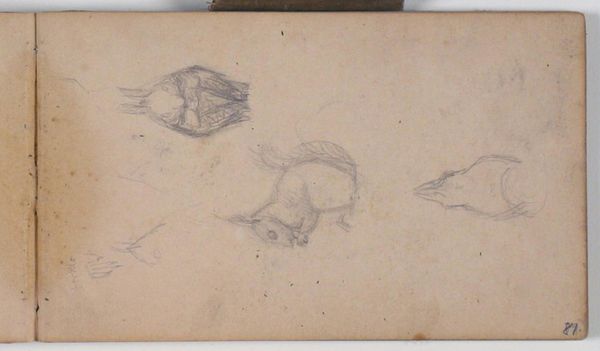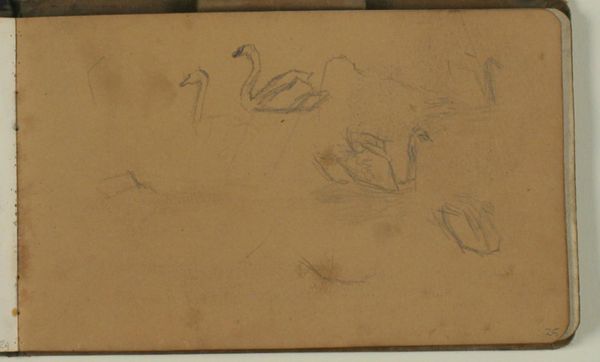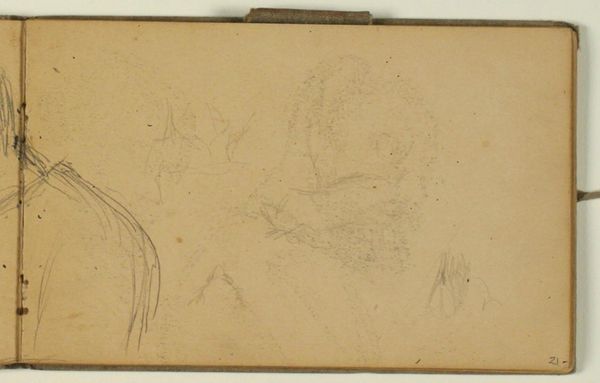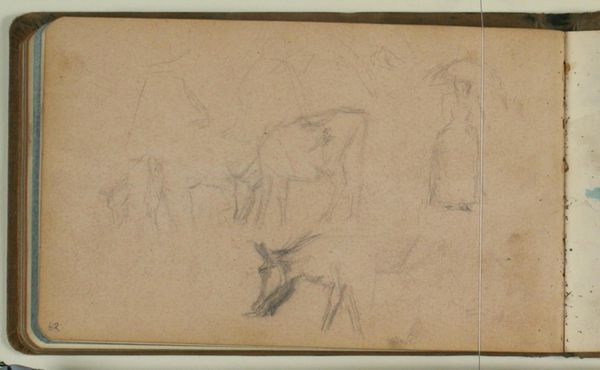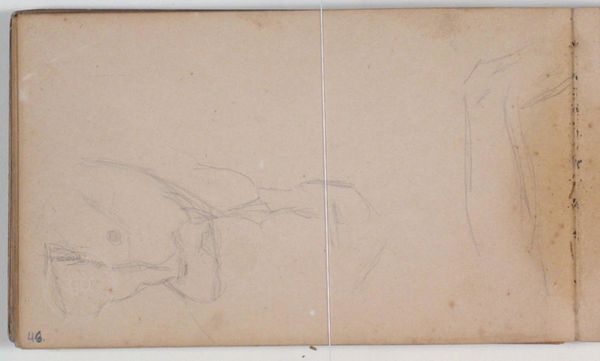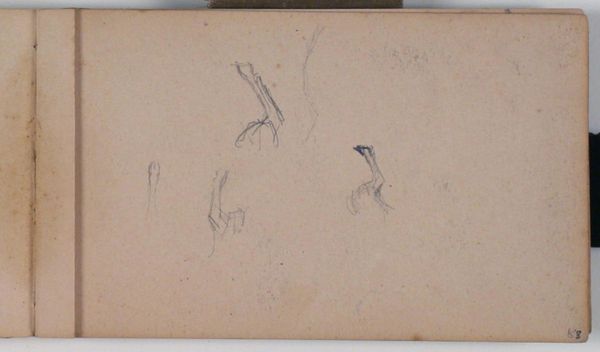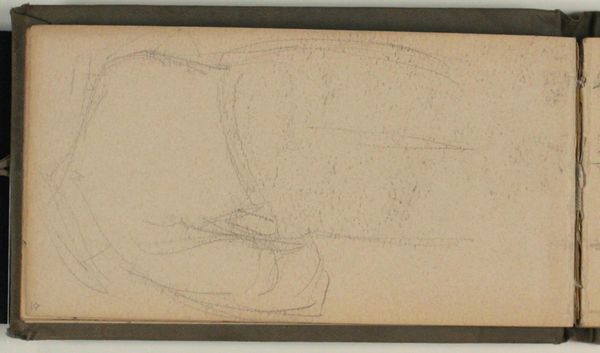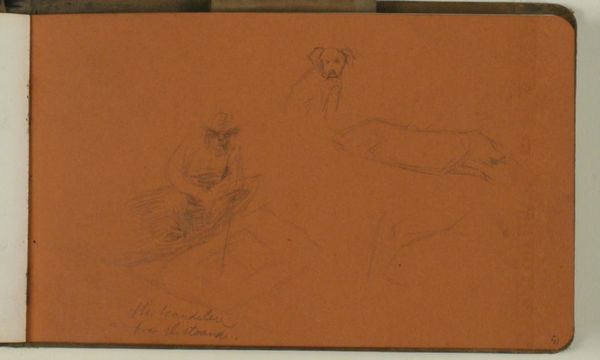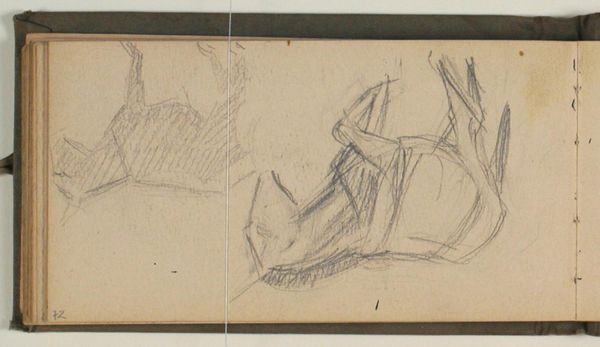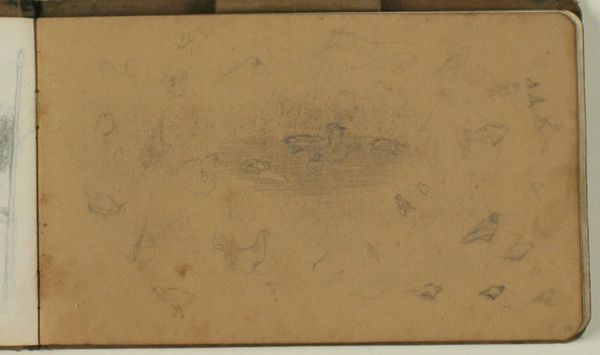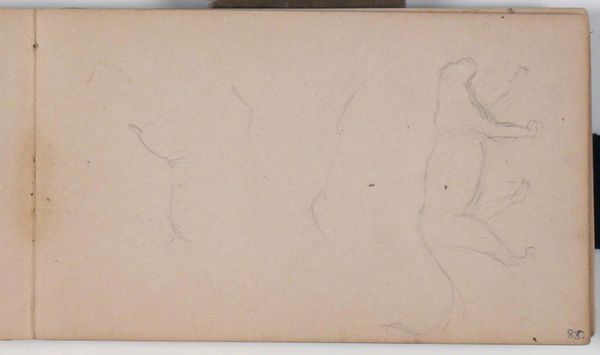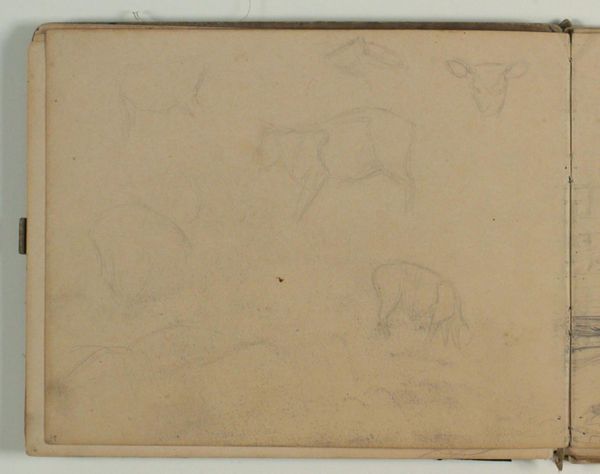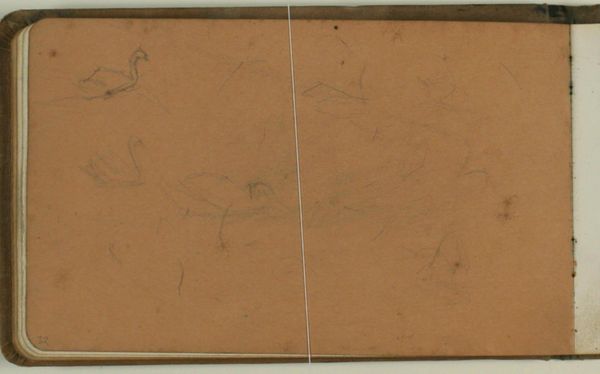
drawing, paper, pencil
#
drawing
#
impressionism
#
figuration
#
paper
#
coloured pencil
#
pencil
#
watercolor
Dimensions: 113 mm (height) x 182 mm (width) (bladmaal)
Editor: This drawing, titled "Figurstudier," was made by Niels Larsen Stevns in 1885, using pencil and watercolor on paper. It’s a quick sketch, quite faint, but I’m curious—what do you see in this piece, especially given its raw and almost unfinished state? Curator: This isn't just a sketch; it’s a record of labor, of process. The hasty lines, the visible pressure of the pencil—they speak to the artist's physical engagement with the materials. Consider the cheapness of the paper, the accessibility of pencil and watercolor in the late 19th century. This wasn't an oil painting destined for a salon; it was a study, a utilitarian object made for a specific purpose: honing the artist's skills. Do you think its eventual purpose might alter our view of it? Editor: That’s an interesting perspective! I tend to see it as more of an art piece rather than purely for "study", but with this information, it highlights the accessibility of art creation. I’d have originally ignored this aspect if the economic status of the artwork creation was never considered. Curator: Exactly. It challenges the notion of high art as something separate from the means of production and the realities of labor. Stevns, like many Impressionists, was concerned with depicting everyday life, and that extended to his own working methods. Can we separate this piece from its time of origin? How much has class played into our views on the artwork today? Editor: So, rather than focusing solely on the aesthetic value, you’re drawing attention to the materials, the artist's labor, and the broader social context in which this drawing was produced? Curator: Precisely. It’s about deconstructing the traditional art historical narrative and understanding art as a product of its material conditions. Think about how the artist’s role here shifts. Editor: That definitely gives me a new way to look at sketches and studies like these, less as minor works and more as documents of artistic practice. Curator: And testaments to the artist's position within a larger socio-economic framework. Thanks for exploring it with me!
Comments
No comments
Be the first to comment and join the conversation on the ultimate creative platform.

